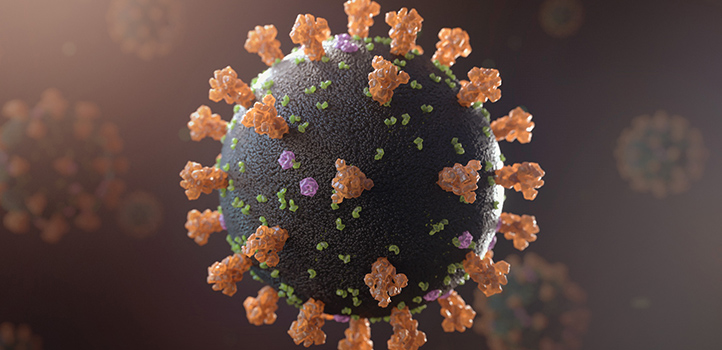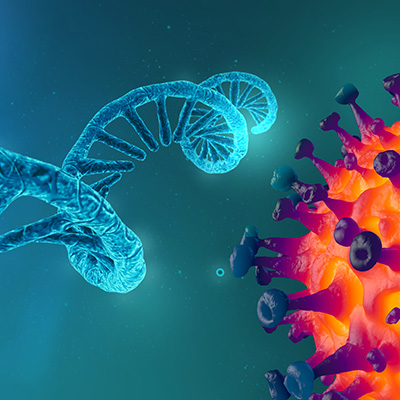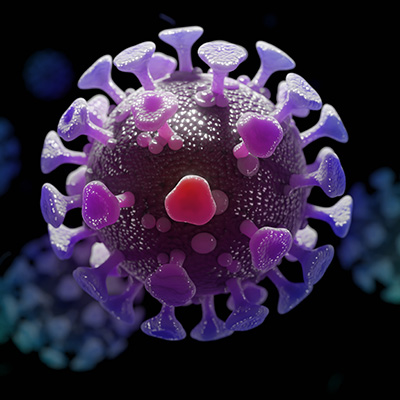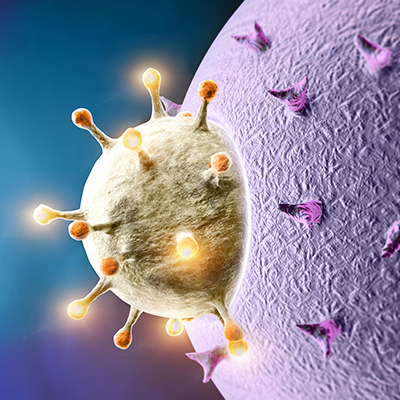July 27, 2020 -- Comparison of the SARS-CoV-2 genome with other betacoronaviruses can provide useful information on how drugs targeting other coronaviruses may improve outcomes for COVID-19 patients. The analysis was presented in a July 27 Frontiers in Cellular and Infection Microbiology article.
The spike proteins of SARS-CoV-2 enable the virus to bind to the human angiotensin-converting enzyme 2 (ACE2). The spike proteins of SARS-CoV and SARS-CoV-2 are similar, but key structural differences in the receptor-binding domain prevent SARS-CoV-specific neutralizing antibodies from inhibiting infection by SARS-CoV-2.
"SARS-CoV-2 appears to have recently evolved from other related [betacoronaviruses], such as the ones causing SARS and Middle East respiratory syndrome (MERS)," explained author Intikhab Alam, PhD, a bioinformatician at King Abdullah University of Science and Technology in Saudi Arabia. "We wanted to understand the genetic makeup of SARS-CoV-2. Seeing what has changed might help find ways to detect the virus and understand its rapid spread. Seeing what remains conserved between these viruses might help predict if therapeutic approaches developed for other [betacoronaviruses] could work on SARS-CoV-2," he said.
Core genomic features are required for the virus to be functional and are usually conserved among all strains of a species. For coronaviruses these include the spike protein, membrane glycoprotein (M), nucleocapsid (N), envelope protein (E), and the ORF1ab (a polyprotein known as replicase or protease). Alternatively, accessory features of the SARS-CoV-2 genome can provide insights into drivers of unique properties of the virus that explain its pathogenicity. Genome annotation and structural modeling can then be used to assess the effect of the accessory features and guide approaches to detection, treatment, and prevention.

Researchers from the university applied a comparative pangenomic approach to data from all sequenced betacoronaviruses to detect core and accessory gene clusters and then annotated their functions through structural analysis. The team's approach was unique because they first clustered all sequences and then calculated alignment to establish phylogeny. This allowed for higher sensitivity in the detection of gene clusters.
They found the E protein varied among betacoronaviruses, but that key features of the E protein are preserved between SARS-CoV and SARS-CoV-2. So, unlike previous analyses, the team classified the E protein, otherwise known as ORF3a or viroporin, as an accessory protein.
The E protein has ion channel activity (a multipass, transmembrane domain) and features a postsynaptic density protein 95 (PDZ)-binding motif (cytoplasmic β-barrel or β-sandwich fold and an N-terminal secretory-pathway signal peptide) that induces virulence. The E proteins from SARS-CoV-2 and SARS-CoV differ only by three substitutions and one deletion.
Therefore, the SARS-CoV-2 proteins are expected to act in the same way that they do for SARS-CoV, as accessory proteins localized in the endoplasmic reticulum-Golgi intermediate compartment and on the cell membrane, where they enhance viral pathogenicity through protein-protein interactions.
Previously, the E protein was identified as a determinant of pathogenicity for SARS-CoV and as a target of SARS-CoV antivirals. The E protein is thought to trigger cytokine storm that activates the inflammasome, resulting in acute respiratory distress syndrome (ARDS), a leading cause of death due to SARS-CoV-2 infection. The high degree of conservation of the ion channel and PDZ-binding motif between SARS-CoV and SARS-CoV-2 suggests that the E protein may be a good target for therapy and can possibly be inhibited with preexisting drugs.
"Drugs that inhibit the envelope protein E of previous SARS viruses should also block the protein in COVID-19," Alam said. "Even though these drugs won't stop the virus from spreading, we hope they could attenuate or prevent acute respiratory distress syndrome and help save lives."
Do you have a unique perspective on your research related to genomics or virology? Contact the editor today to learn more.
Copyright © 2020 scienceboard.net









